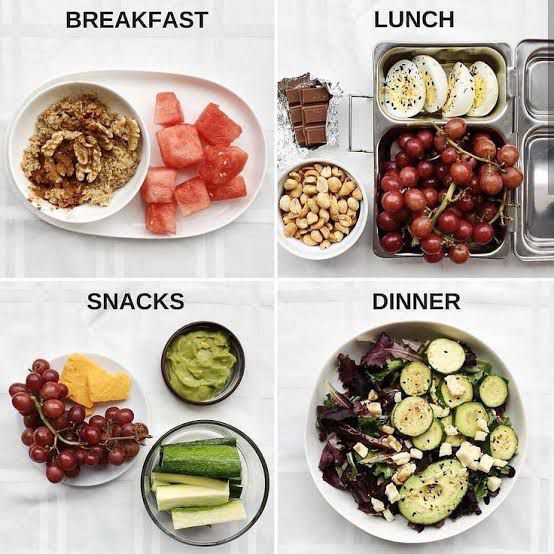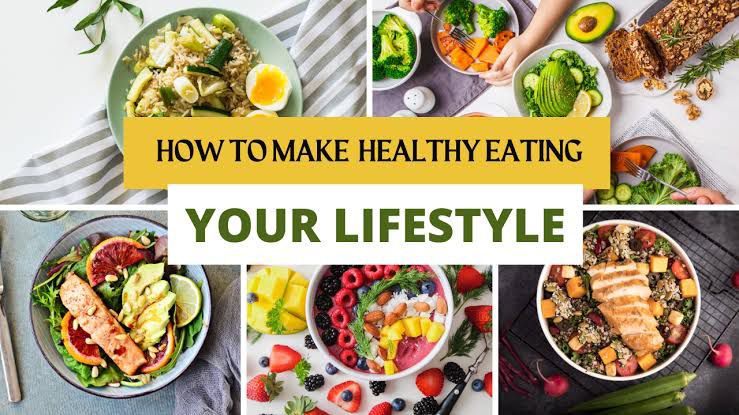How to Eat Healthy on a Budget: A Comprehensive Guide
Eating healthy is often perceived as expensive and difficult, but with the right strategies, you can maintain a balanced diet without breaking the bank. This guide will provide practical tips and insights into how to eat healthy on a budget, drawing from FDA guidelines for healthy meals.
Understanding Healthy Eating
Healthy eating is about consuming a balanced diet that provides your body with the necessary nutrients—vitamins, minerals, protein, carbohydrates, and healthy fats—to function optimally. A healthy diet includes a variety of food groups, ensuring you get the essential nutrients to maintain energy levels, support bodily functions, and prevent chronic diseases.
Key Components of Healthy Eating:
- Fruits and Vegetables: These are rich in vitamins, minerals, and antioxidants. Aim for a variety of colors in your diet to get a broad range of nutrients.
- Whole Grains: Foods like brown rice, oats, and whole wheat bread are rich in fiber and help with digestion.
- Protein Sources: Include lean meats, poultry, fish, beans, nuts, and seeds for a balanced protein intake.
- Healthy Fats: Focus on unsaturated fats found in olive oil, nuts, and avocados, while limiting saturated fats found in processed foods.
- Limited Sugar and Salt: Too much sugar and salt can lead to health issues like diabetes and high blood pressure, so these should be consumed in moderation.
Eating Healthy on a Budget

It’s a myth that eating healthy is always expensive. By being strategic with your grocery shopping, meal planning, and food choices, you can enjoy nutritious meals without spending too much.
Here are some practical tips:
1. Plan Your Meals
- Meal Planning: Start by creating a weekly meal plan. This helps you avoid impulse purchases and ensures you use all ingredients efficiently. Plan meals around ingredients you already have and make a shopping list based on what you need.
- Batch Cooking: Prepare meals in bulk and store them in the fridge or freezer. This saves time and reduces the temptation to buy fast food or unhealthy snacks when you’re short on time.
2. Buy in Bulk
- Buying non-perishable items like grains, beans, and pasta in bulk can significantly reduce costs. These staples are versatile and can be used in a variety of healthy dishes.
- Frozen Produce: Frozen fruits and vegetables are often cheaper than fresh and last longer. They retain most of their nutrients and can be just as healthy.
3. Shop Seasonally and Locally
- Fruits and vegetables are usually cheaper when they’re in season. Consider visiting local farmers’ markets or buying directly from farmers to get fresh produce at lower prices.
- Grow Your Own: If possible, start a small garden with easy-to-grow vegetables like tomatoes, herbs, or spinach. This can cut down your grocery bill and provide you with fresh produce.
4. Cook at Home
- Home-cooked meals are typically healthier and more cost-effective than eating out or ordering takeout. Try to make cooking a habit by preparing simple, nutritious meals at home.
- Limit Processed Foods: Processed foods, while convenient, are often more expensive and less nutritious than whole foods. Focus on whole foods like fruits, vegetables, grains, and lean meats to save money and eat healthier.
5. Choose Plant-Based Proteins
- Plant-based proteins like beans, lentils, and chickpeas are not only affordable but also nutritious. They are a great alternative to meat and can be used in various dishes such as soups, stews, and salads.
- Meat Alternatives: Reduce meat consumption by incorporating meatless meals into your diet. Tofu, tempeh, and legumes are excellent protein-rich options.
6. Limit Food Waste
- Food waste is a common issue that can significantly increase your food expenses. To reduce waste:
- Use leftovers creatively.
- Store perishable items properly.
- Freeze excess food to use later.
FDA Guidelines for Healthy Meals
The Food and Drug Administration (FDA) provides guidelines to help consumers make informed food choices and maintain a healthy diet. Following these recommendations can help you eat nutritiously while sticking to a budget.
Key FDA Guidelines:
- Balance Calories: Choose foods that provide adequate calories based on your age, gender, and activity level. Avoid consuming more calories than you burn.
- Portion Control: Be mindful of portion sizes. Eating too much, even of healthy foods, can lead to overeating.
- Nutrient Density: Focus on nutrient-dense foods—those rich in vitamins, minerals, and other beneficial compounds but low in calories. Examples include leafy greens, berries, and lean meats.
- Limit Added Sugars, Sodium, and Saturated Fats: The FDA recommends reducing intake of added sugars, sodium, and unhealthy fats, which are often found in processed foods and sugary drinks.
- Read Nutrition Labels: Use the nutrition facts label to make healthier food choices. Look for foods lower in sodium, added sugars, and unhealthy fats.
Budget-Friendly Meal Ideas

Here are a few meal ideas that are healthy and affordable:
1. Oatmeal with Fruits and Nuts
- Ingredients: Rolled oats, bananas, almonds, chia seeds
- Cost-effective and nutritious, this meal is rich in fiber and healthy fats. You can add fresh or frozen fruits for extra vitamins and antioxidants.
2. Vegetable Stir-Fry with Brown Rice
- Ingredients: Seasonal vegetables, brown rice, tofu (optional)
- A stir-fry is a quick and budget-friendly way to use leftover veggies. Brown rice adds fiber and sustenance, while tofu or beans can be added for protein.
3. Lentil Soup
- Ingredients: Lentils, carrots, onions, garlic, spices
- Lentils are a cheap source of protein and fiber. This hearty soup can be made in bulk and stored for several days.
4. Chickpea Salad
- Ingredients: Canned chickpeas, cucumber, tomato, olive oil, lemon
- A light, protein-packed salad that’s perfect for a quick lunch. Canned chickpeas are inexpensive and versatile.
Conclusion
Eating healthy on a budget is achievable with careful planning, smart shopping, and a focus on whole, nutritious foods. By following the FDA’s guidelines and incorporating budget-friendly meal strategies, you can maintain a healthy diet without overspending.
Additional Elements:
Infographic:
- “5 Tips to Eat Healthy on a Budget”
- 🥙🥗
- Plan Meals Ahead 📆
- Buy in Bulk 🛍
- Cook at Home 🫕
- Buy Seasonal Produce 🥗
- Limit Food Waste ♻️
Sample Weekly Meal Plan Template:
Weekly Meal Planner
| Day | Breakfast | Lunch | Dinner | Snacks |
|---|---|---|---|---|
| Monday | Example: Oatmeal with fruit | Example: Veggie wrap with hummus | Example: Stir-fry with brown rice | Example: Carrot sticks with hummus |
| Tuesday | ||||
| Wednesday | ||||
| Thursday | ||||
| Friday | ||||
| Saturday | ||||
| Sunday |
Fill in each meal and snack based on your budget-friendly and healthy recipes.
Grocery Checklist
Fruits and Vegetables
- Apples
- Bananas
- Carrots
- Spinach
- Tomatoes
- Bell peppers
- Frozen vegetables (e.g., peas, corn, mixed veggies)
Grains and Starches
- Brown rice
- Whole wheat bread
- Oats
- Quinoa
- Pasta (whole wheat or other)
Protein
- Lentils
- Canned chickpeas
- Beans (black, kidney, etc.)
- Eggs
- Chicken breast (bulk packs)
- Canned tuna or salmon
- Tofu or tempeh
Dairy and Alternatives
- Milk (or plant-based alternatives like almond milk)
- Yogurt
- Cheese
Healthy Fats
- Olive oil
- Nuts (almonds, walnuts, etc.)
- Peanut butter (or other nut butters)
- Avocados
Seasonings and Condiments
- Salt
- Pepper
- Garlic
- Herbs (fresh or dried)
- Soy sauce
- Lemon juice
Miscellaneous
- Coffee or tea
- Snack bars (low sugar)
- Dark chocolate (for treats)
How to Use:
- Fill in the Weekly Planner: Decide on meals based on your ingredients, and make sure to plan meals that use similar ingredients to maximize your grocery list.
- Check Off Grocery Items: As you plan your meals, check off the ingredients you need. Stick to this list when shopping to avoid overspending.
Feel free to print this out or save it digitally for easy access!
Call-to-Action:
Also Read:
6 Food Pantries Near Me: Get Free Food
Best Cheap Food to Buy When Broke
Cheap Food Places Near You! Find Affordable Options

